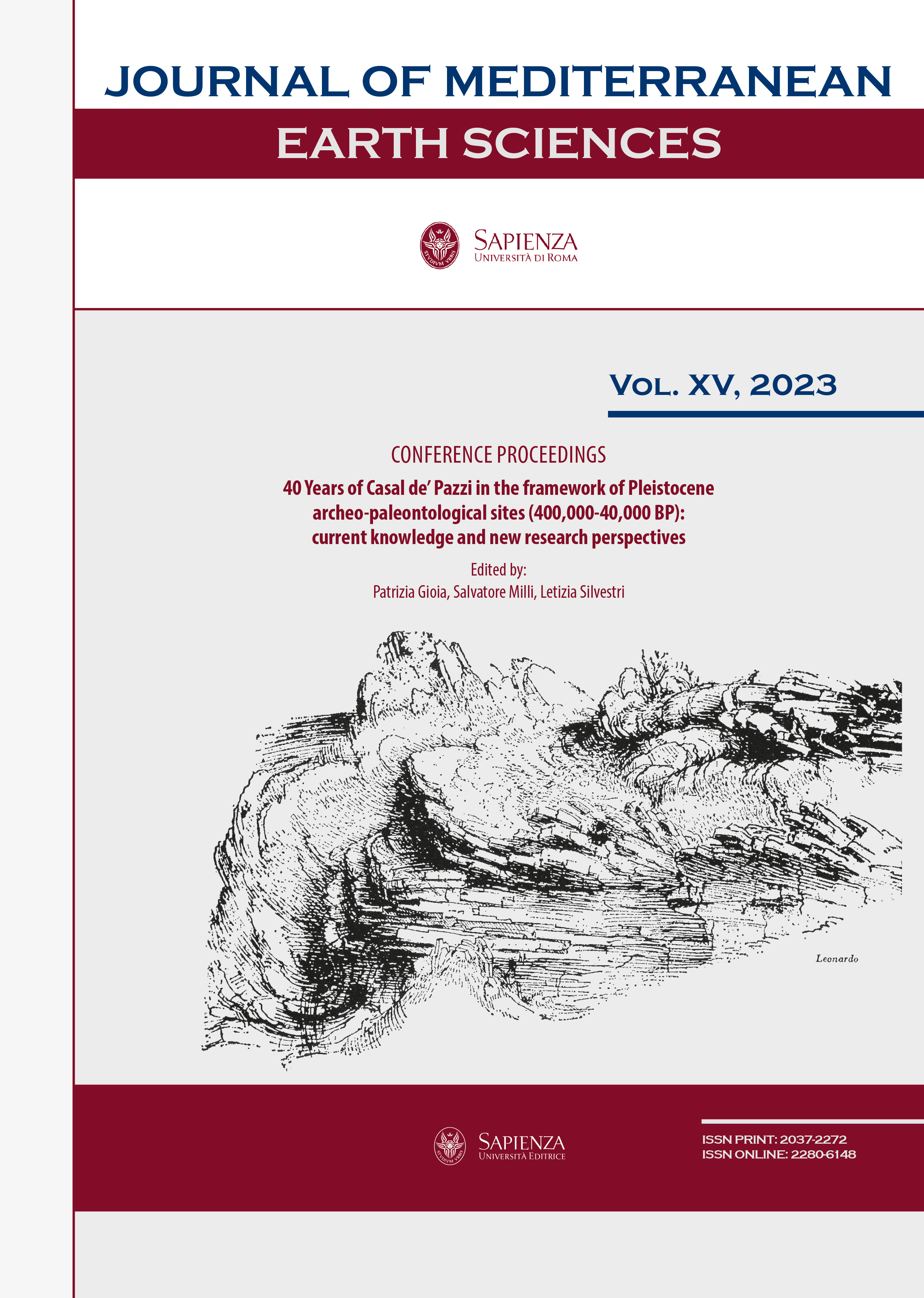Environment and daily life in the Campagna Romana of the late Lower Palaeolithic: the case-study of La Polledrara di Cecanibbio (Latium, Italy)
DOI:
https://doi.org/10.13133/2280-6148/18073Abstract
The site of La Polledrara di Cecanibbio (Latium, Italy) is located about 22 kilometers northwest of Rome. Excavation campaigns conducted from 1985 to 2013 revealed 1200 square meters of deposits referable to a river that was active during the Middle Pleistocene. Two main sedimentary phases have been recognized. Initially, a fluvial episode led to the deposition of thousands of skeletal remains (mainly mammals, but also amphibians, reptiles, and birds) along with lithic and bone artifacts. Successively, a swampy phase occurred, during which some elephants (Palaeoloxodon antiquus) were trapped in muddy ponds. The skeleton of one of these individuals is surrounded by lithic implements that were carried at (and/or knapped on) the spot. The taphonomic analysis of the skeleton and artifacts context - including technology, refitting, use-wear, residues, and spatial analyses - indicates that the elephant carcass had been subjected to a butchering activity aimed at collecting meat and fat for food, possibly in more than one episode, as well as bones as raw material for making tools. The evidence collected at the site and the comparison with other relevant sites allow for some considerations about the daily dietary needs of the humans who frequented the site and the resources available there.
Downloads
Published
How to Cite
License
The submission has not been previously published, nor is it before another journal for consideration (or an explanation has been provided in Comments to the Editor).


